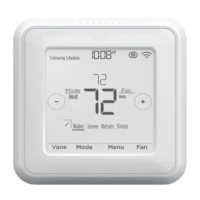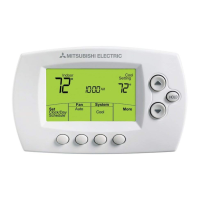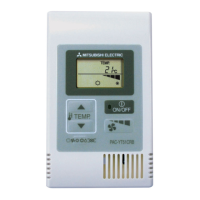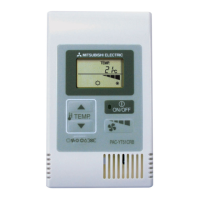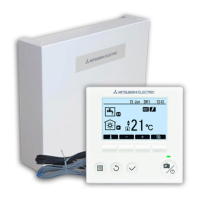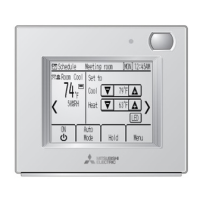Do you have a question about the Mitsubishi Electric WS0-CPU0 and is the answer not in the manual?
Describes the purpose and scope of the manual, including its target audience and structure.
Defines requirements for personnel installing and operating the safety controller.
Outlines essential safety instructions and protective measures for proper use.
Lists the necessary hardware and software for installation.
Provides instructions for installing and updating the software.
Details the procedure for uninstalling the software.
Offers solutions for common installation and error messages.
Describes the initial screen and available actions after launching the tool.
Introduces the main views available in the software interface.
Details the window for configuring hardware modules and connections.
Step-by-step guide for setting up hardware modules in the project.
Describes how to adjust settings for connected devices and elements.
Details how to connect SICK EFI-compatible devices to the CPU module.
Introduces the environment for programming safety logic using function blocks.
Provides a practical exercise for configuring logic using the editor.
Describes the automatic check for errors in the logic program.
Details how to view system messages, warnings, and error histories.
Outlines the initial steps to connect the PC to the safety controller.
Describes how to create, edit, and delete connection profiles.
Details the process of connecting to the safety controller.
Explains different user levels and their authorizations for configuration transfers.
Provides a general overview of the Flexi Link system capabilities.
Lists the minimum hardware and software requirements for Flexi Link.
Guides users through the initial setup of a Flexi Link system.
Details how to connect to and identify stations in an existing Flexi Link network.
Covers transferring and verifying the Flexi Link system configuration.
Addresses common causes of Flexi Link network malfunctions and their solutions.
Introduces the Flexi Line system for networking multiple safety controllers.
Lists the minimum requirements and limitations for using Flexi Line.
Explains the operating principles and topology of the Flexi Line system.
Step-by-step process for setting up and commissioning a Flexi Line system.
Provides an overview of programming using function blocks.
Highlights critical safety considerations for logic programming.
Lists all available logic and application-specific function blocks.
Explains how to configure parameters and properties of function blocks.
Details how to connect input and output signals to function blocks.
Describes the function and usage of the Fault present output.
Explains function blocks for minimizing safety path response time.
Details specific function blocks for particular applications.
Describes the Reset function block for manual safety stop acknowledgment.
Details the Restart function block for acknowledging manual restart requests.
Details the Emergency stop function block for implementing emergency stop functionality.
Details the Safety gate monitoring function block.
Provides an overview of muting function blocks and their applications.
Details error states and procedures for resetting muting errors.
Explains the Parallel muting function block and its application.
Describes the Sequential muting function block and sensor placement.
Details the Cross muting function block for unidirectional material transport.
Introduces function blocks for press contact monitoring.
Details the Eccentric press contact function block for mechanical presses.
Describes the Universal press contact function block for various press types.
Covers function blocks for controlling press cycle operations.
Covers creating and managing grouped and customized function blocks.
Explains how to simulate the programmed logic offline.
Describes how to force input values for testing in online operation.
Explains dual-channel evaluation and discrepancy time monitoring features of I/O modules.
Describes filters for handling contact bounce and signal changes.
Explains how to disable test pulses and its impact on safety parameters.
Details the process of transferring project data to the safety controller.
Explains how the system checks module compatibility during transfer.
Guides users on how to verify the configuration after transfer.
Describes how to protect the configuration against accidental changes.
Covers wiring connections and power supply requirements.
Explains how to transfer the configuration to the safety controller.
Outlines the procedures for technical testing and final commissioning.
Provides example reports for different application scenarios.
Describes the purpose and scope of the manual, including its target audience and structure.
Defines requirements for personnel installing and operating the safety controller.
Outlines essential safety instructions and protective measures for proper use.
Lists the necessary hardware and software for installation.
Provides instructions for installing and updating the software.
Details the procedure for uninstalling the software.
Offers solutions for common installation and error messages.
Describes the initial screen and available actions after launching the tool.
Introduces the main views available in the software interface.
Details the window for configuring hardware modules and connections.
Step-by-step guide for setting up hardware modules in the project.
Describes how to adjust settings for connected devices and elements.
Details how to connect SICK EFI-compatible devices to the CPU module.
Introduces the environment for programming safety logic using function blocks.
Provides a practical exercise for configuring logic using the editor.
Describes the automatic check for errors in the logic program.
Details how to view system messages, warnings, and error histories.
Outlines the initial steps to connect the PC to the safety controller.
Describes how to create, edit, and delete connection profiles.
Details the process of connecting to the safety controller.
Explains different user levels and their authorizations for configuration transfers.
Provides a general overview of the Flexi Link system capabilities.
Lists the minimum hardware and software requirements for Flexi Link.
Guides users through the initial setup of a Flexi Link system.
Details how to connect to and identify stations in an existing Flexi Link network.
Covers transferring and verifying the Flexi Link system configuration.
Addresses common causes of Flexi Link network malfunctions and their solutions.
Introduces the Flexi Line system for networking multiple safety controllers.
Lists the minimum requirements and limitations for using Flexi Line.
Explains the operating principles and topology of the Flexi Line system.
Step-by-step process for setting up and commissioning a Flexi Line system.
Provides an overview of programming using function blocks.
Highlights critical safety considerations for logic programming.
Lists all available logic and application-specific function blocks.
Explains how to configure parameters and properties of function blocks.
Details how to connect input and output signals to function blocks.
Describes the function and usage of the Fault present output.
Explains function blocks for minimizing safety path response time.
Details specific function blocks for particular applications.
Describes the Reset function block for manual safety stop acknowledgment.
Details the Restart function block for acknowledging manual restart requests.
Details the Emergency stop function block for implementing emergency stop functionality.
Details the Safety gate monitoring function block.
Provides an overview of muting function blocks and their applications.
Details error states and procedures for resetting muting errors.
Explains the Parallel muting function block and its application.
Describes the Sequential muting function block and sensor placement.
Details the Cross muting function block for unidirectional material transport.
Introduces function blocks for press contact monitoring.
Details the Eccentric press contact function block for mechanical presses.
Describes the Universal press contact function block for various press types.
Covers function blocks for controlling press cycle operations.
Covers creating and managing grouped and customized function blocks.
Explains how to simulate the programmed logic offline.
Describes how to force input values for testing in online operation.
Explains dual-channel evaluation and discrepancy time monitoring features of I/O modules.
Describes filters for handling contact bounce and signal changes.
Explains how to disable test pulses and its impact on safety parameters.
Details the process of transferring project data to the safety controller.
Explains how the system checks module compatibility during transfer.
Guides users on how to verify the configuration after transfer.
Describes how to protect the configuration against accidental changes.
Covers wiring connections and power supply requirements.
Explains how to transfer the configuration to the safety controller.
Outlines the procedures for technical testing and final commissioning.
Provides example reports for different application scenarios.
| Power Supply | 24V DC |
|---|---|
| Built-in Ethernet Ports | 1 |
| Built-in RS-232 Port | 1 port |
| Built-in USB Port | 1 |
| Supported Programming Languages | Ladder Diagram, Structured Text, Function Block Diagram |
| Operating Temperature Range | 0 to +55°C |
| Storage Temperature Range | -25°C to 75°C |
| Vibration Resistance | 5 to 8.4 Hz (amplitude 3.5mm), 8.4 to 150 Hz (acceleration 9.8 m/s²) |
| Shock Resistance | 147 m/s² |

